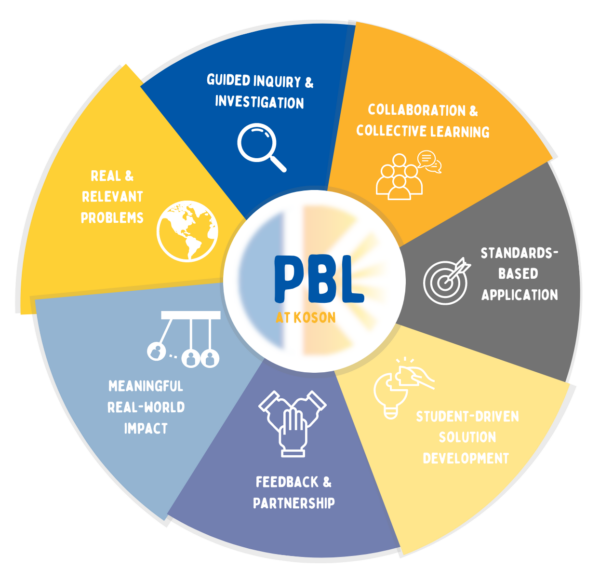Problem-based learning is a teaching methodology where learning is student-centered and driven by real-world problems. Problem-based learning can include projects. However, completing a project is not the primary objective. Instead, students aim to apply their learned knowledge and develop realistic solutions to problems facing our world today.
By focusing on unsolved problems, the KOSON’s Problem-Based Learning model is unique. Students delve into issues that remain unsolved, such as developing personalized medicine solutions based on individual genetic profiles and those that require continuous action, like climate change.
Traditional methods often focus on understanding existing solutions, sometimes referred to as ‘worked examples.’ Students, on the other hand, learn empowerment through a unique problem-solving approach. They discover their potential to make a positive impact at a young age and learn that adults aren’t the sole proprietors of problem-solving – citizenship can be exercised through research-backed solutions and small, impactful steps. This focus on actionable change empowers Koson students to explore ways to make a difference in their communities, preparing them to become active participants in shaping a brighter future.
Our problem-based learning (PBL) model offers a distinct pedagogical approach that demonstrably enhances student proficiency in meeting standards-based outcomes. Students actively engage with the underlying knowledge and skills delineated in the standards and take ownership of the learning process. Students recognize the practical applications of the knowledge they are acquiring and become active participants in their own learning journey.



